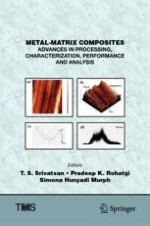This collection brings together engineers, scientists, scholars, and entrepreneurs to present their novel and innovative contributions in the domain specific to metal-matrix composites and on aspects specific to processing, characterization, mechanical behavior, measurements, failure behavior, and kinetics governing microstructural influences on failure by fracture. Topics include but are not limited to:
• Metals and metal-matrix composites
• Nano-metal based composites
• Intermetallic-based composites
Contributions in the above topics connect to applications in industry-relevant areas: automotive; nuclear and clean energy; aerospace; failure analysis; biomedical and healthcare; and heavy equipment, machinery, and goods.
